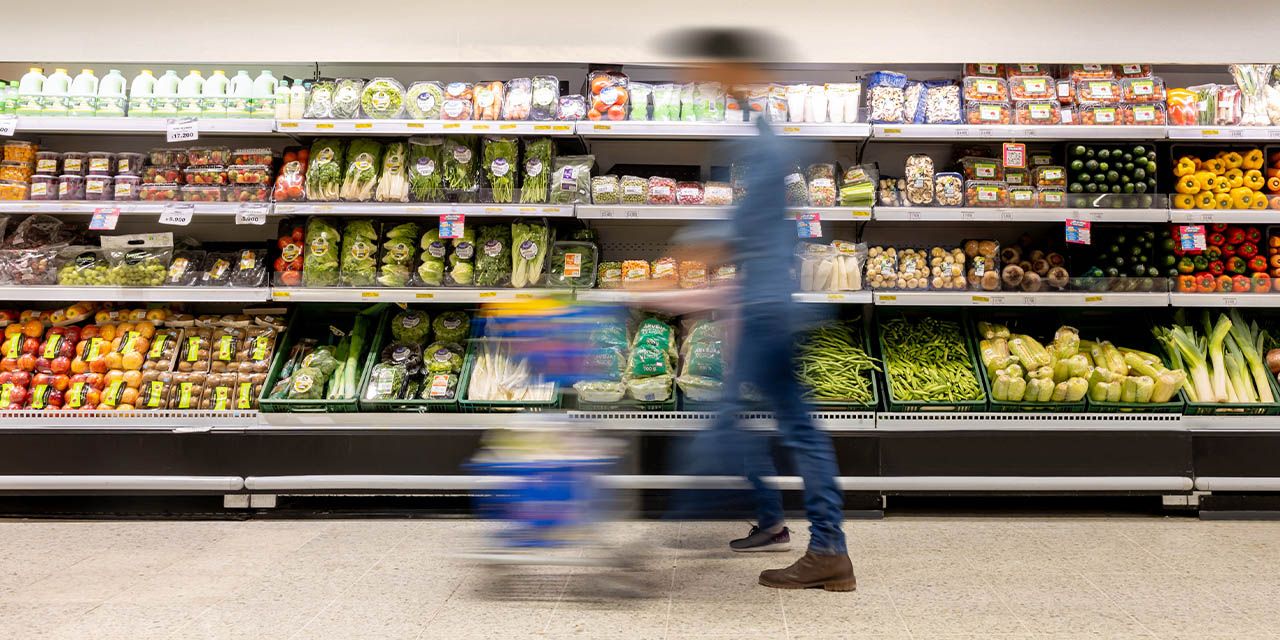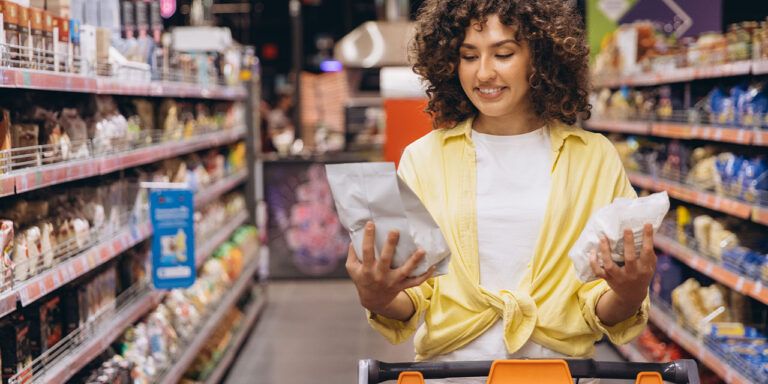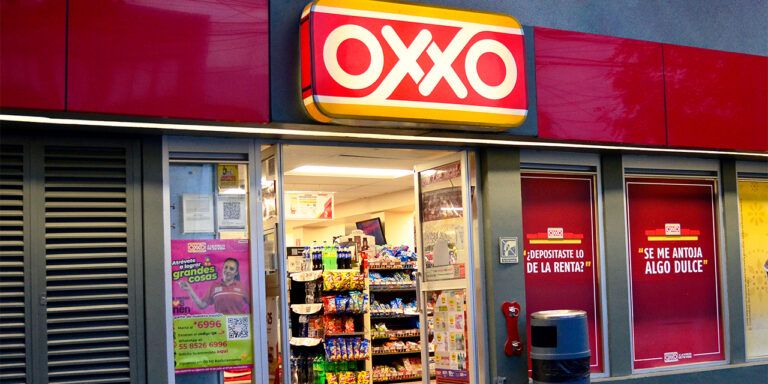The evolution of grocery retail
In today’s rapidly evolving grocery landscape, operational excellence demands more than incremental improvements. While digital transformation has reshaped customer expectations and shopping behaviors, many grocers are still largely relying on the same foundational systems they were 10 or even 20 years ago.
Moving beyond traditional solutions
The foundation of most grocery operations still rests on baseline technologies like point-of-sale (POS) systems and enterprise resource planning (ERP) solutions. While these systems provide essential functionality, they are not a means of optimization. Today’s grocery leaders face a complex web of challenges that these legacy systems struggle to address:
- Supply constraints from ongoing sourcing and distribution disruptions.
- Consumer expectations that shift across generations and sales channels.
- Margin erosion due to inflation, rising costs, and waste.
- Labor shortages, retention issues, and scheduling inefficiencies that impact productivity.
- Sustainability demands have intensified from both regulators and consumers.
Meeting these multifaceted challenges requires moving beyond transactional systems to true optimization—leveraging AI to enhance decision-making across every aspect of operations.
The evolution of grocery retail requires levels of innovation that many companies have been hesitant to implement. The specific reasons for this lack of innovation vary from retailer to retailer. Still, today’s truth is that the path forward is to embrace AI-enabled solutions that can transform grocery operations.
These solutions can start with fresh categories—the most challenging yet highest-margin areas of the business—and then extend across the entire value chain to drive profitability, enhance customer satisfaction, and ensure sustainable growth.
A fresh-first approach to grocery optimization
Fresh categories represent both the greatest challenge and the most significant opportunity in grocery retail. These departments face the highest risk of spoilage and waste, coupled with the most complex demand patterns in the store.
Yet they also significantly impact customer loyalty and offer significant sales potential when managed effectively. However, fresh categories cannot be managed in isolation—their success depends on tight integration with the rest of the store.
Successful food retailers must master both the hard discounters’ lean, highly efficient grocery supply chains and the agile, responsive supply chains required for fresh products. In addition, many will need to manage the complexity of operating multiple store formats while offering several fulfillment options.
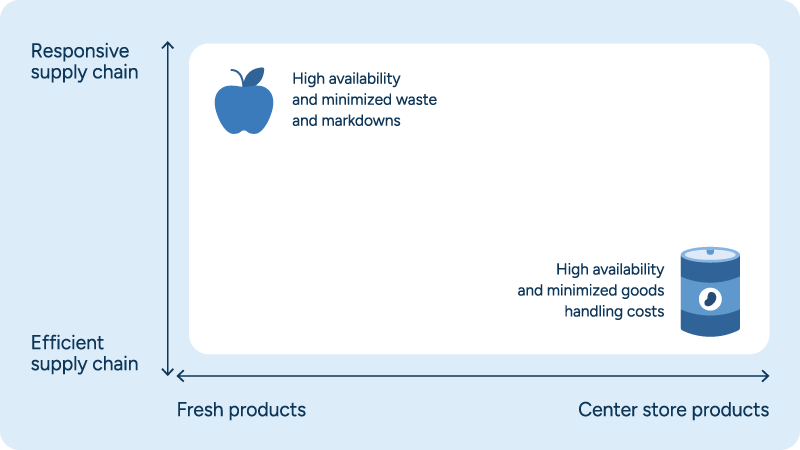
An integrated approach delivers multiple benefits that extend far beyond the fresh departments themselves and enables more accurate prediction of the impacts of decisions across all categories. For example, a promotion on pasta can increase demand for fresh tomatoes and herbs.
The fresh-first approach integrates AI-driven forecasting, replenishment, and inventory management to ensure consistent product availability and minimize waste.
The complexity of fresh categories, which has historically kept retailers from trying to optimize them, today makes an ideal starting point for AI-enabled optimization. Rather than isolating fresh optimization, it incorporates fresh within a unified, end-to-end transformation strategy. When grocers master fresh management, they establish operational excellence that naturally extends to center-store categories, creating a foundation for success across the entire business.
Driving cross-functional excellence
Fresh optimization serves as a catalyst for improvement across multiple operational areas. However, implementing new technology, especially AI-enabled solutions, shouldn’t be static or siloed. It needs to interact seamlessly with data and other planning functions. An ideal platform is single, secure, and data-rich, uniting AI capabilities across planning functions to support continuous enablement and provide access to the latest AI tools to unlock value at scale.
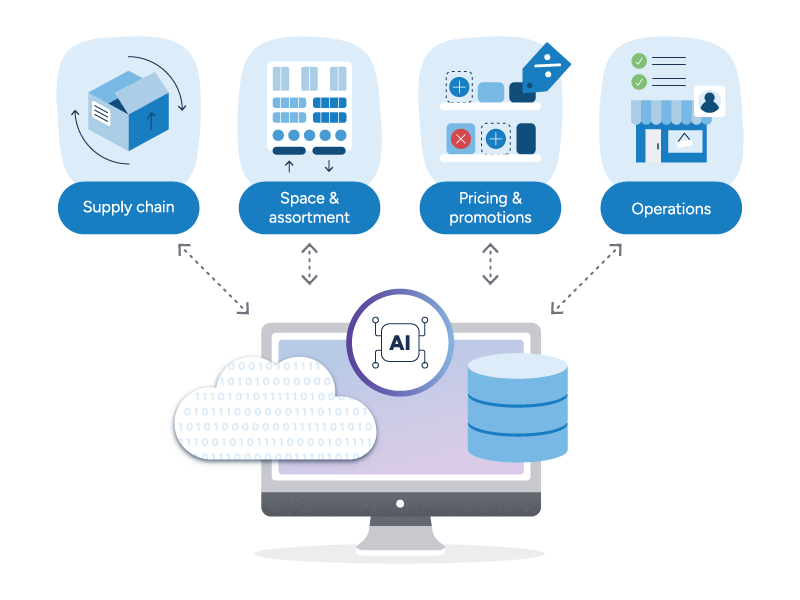
The RELEX platform is designed for optimal performance and scalability through cross-functional collaboration, easy data sharing, and the continual integration of the latest AI developments. All functions pull from a single database for smoother data sharing, keener insights, and continually refined AI calculations. The platform integrates the latest technology from both RELEX and our partners (like Microsoft) so our customers can easily incorporate innovations into their daily processes, giving them stability, scalability, and protection against inevitable market surprises to remain profitable and efficient.
Unified planning optimizes resource allocation for storage and transportation, ensuring that limited capacity is used efficiently. In space planning and assortment, AI-driven insights help determine optimal product placement and category mix based on fresh product performance and complementary sales patterns. For pricing and promotions, understanding fresh product demand enables more strategic decisions about promotional timing and markdown optimization.
These improvements also extend to workload forecasting, where better forecasting of fresh product demand leads to more accurate labor planning and task prioritization. The result is a more efficient end-to-end process, improving the customer experience by maintaining consistent availability of fresh and center-store products.
AI-driven optimization and operational improvements
Maximizing forecasting and replenishment precision
Advanced forecasting and replenishment capabilities serve as the backbone of modern grocery operations. AI-enabled systems analyze vast amounts of data to predict demand patterns with unprecedented accuracy, considering factors ranging from weather and local events to historical sales patterns and promotional activities.
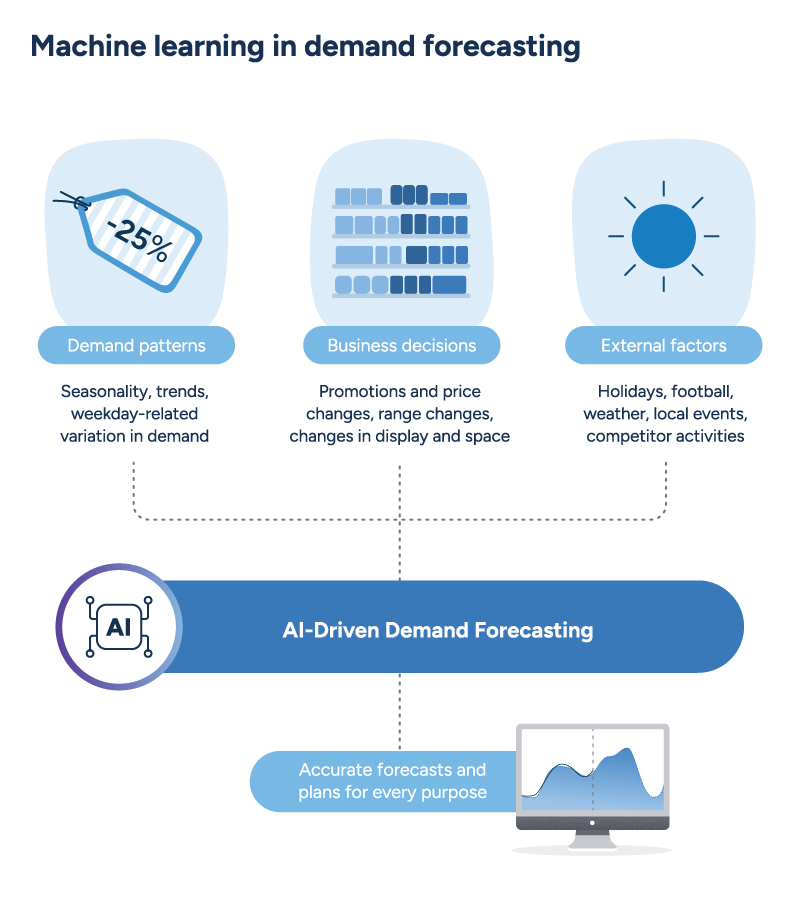
One example of enhanced replenishment capabilities is delivery flow smoothing. Delivery flow smoothing prioritizes specific categories, such as ultra-fresh ones, so they are delivered as close to peak demand days as possible, improving availability and mitigating spoilage. Center store items are then delivered and shelved on less busy days.
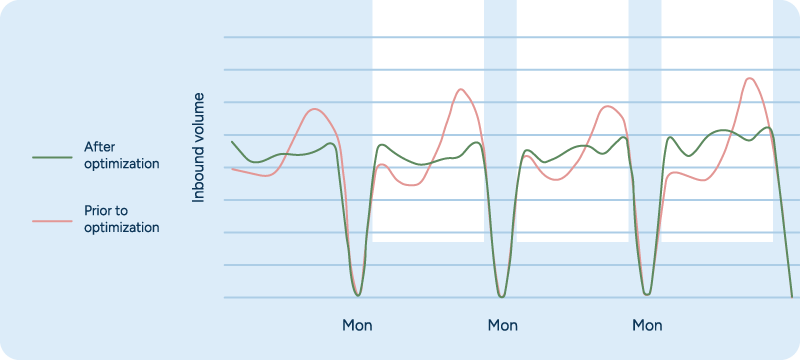
This enhanced precision enables grocers to maintain optimal inventory levels across both fresh and center-store categories, reducing waste while ensuring product availability. Prioritization not only helps optimize deliveries but also boosts store efficiency by pushing inventory to stores at the best day and time to minimize pressure on store staff and disruption in the aisles. The impact extends beyond individual stores to improve efficiency across the entire supply chain, from distribution centers to omnichannel fulfillment.
In-store operations and execution
Sometimes referred to as probabilistic or predictive inventory, the notion of “true inventory” is to learn from incidents, however irregular, to ultimately and automatically reduce the time and effort required to ensure the right amount of items are in the right place at the right time.
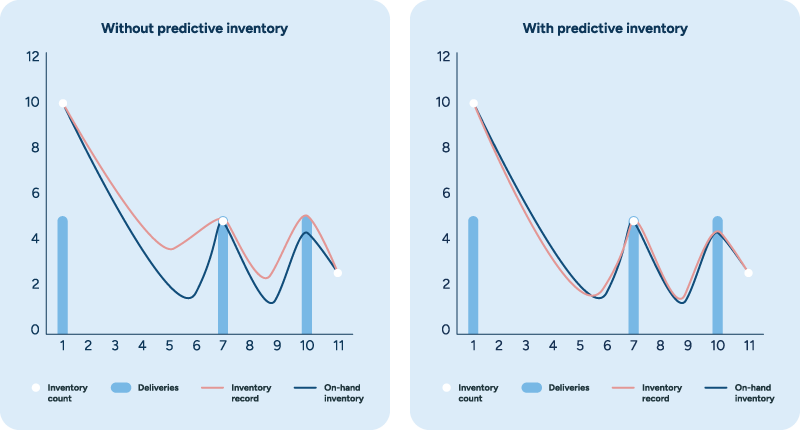
Advanced capabilities that provide retailers with an understanding of true inventory represent a fundamental shift from traditional inventory management approaches. Rather than simply tracking stock levels, predictive inventory capabilities provide near real-time visibility while predicting and detecting anomalies in inventory patterns. This enhanced accuracy drives improvements across multiple business dimensions, from reduced stockouts and waste to improved inventory turnover and operational efficiency.
Combining AI-enhanced solutions like RELEX True Inventory and RELEX Mobile Pro for end-to-end inventory management and ordering allows in-store associates to manage stock, prioritize tasks, and order directly from one platform. By optimizing counts and correcting inventory anomalies across in-store and online channels.
True Inventory reduces stockouts and excess stock, boosting availability and customer satisfaction. At the same time, Mobile Pro heightens product visibility for store employees, driving better inventory and task compliance with a simple, easy-to-use application.
Space and assortment optimization
AI-driven insights transform space planning and assortment decisions. By analyzing sales patterns, customer behavior, and inventory data, grocers can optimize store layouts and product mix to maximize efficiency and sales. This might mean adjusting shelf space allocation based on actual demand patterns or tailoring assortments to local preferences.
RELEX centralizes data within a single platform, ensuring decisions are based on a unified source of truth. AI-driven analytics and machine learning enable retailers to optimize space planning with precise insights into customer behavior and product performance at the store level. These insights help align collaborative decision-making across departments, allowing retailers to synchronize space planning efforts with broader supply chain initiatives.
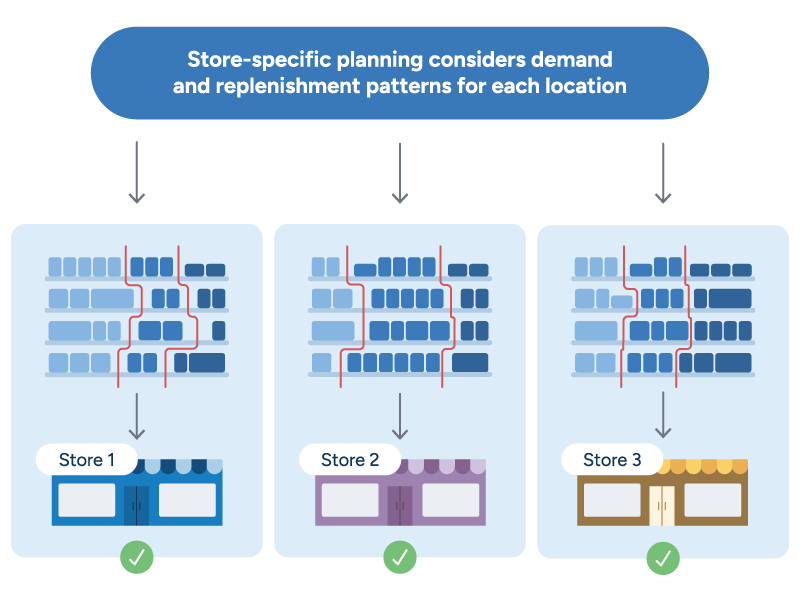
Successful unified retail space optimization efforts allow businesses to see all the benefits of localized space planning. Companies like East of England Co-Op have seen a 2.2% sales increase through store-specific planogramming, while others have seen a 12% improvement in inventory turnover. Circle K saw over 10% inventory reduction in their most challenging category, tobacco, and a 2% increase in availability.
Pricing and promotion effectiveness
AI-enabled systems revolutionize pricing and promotional strategies by providing near real-time insights into price elasticity and promotional effectiveness. Further, the integration of fresh and center-store data provides particularly valuable insights. For instance, understanding the relationship between fresh produce sales and complementary center-store items enables more effective cross-merchandising and promotion planning.
Adopting a unified approach positions businesses to out-compete and promote sustainable customer-centric growth. Grocers can optimize regular pricing, promotional offers, and markdowns based on actual demand patterns and inventory levels. This capability is especially valuable for fresh categories, where optimal pricing can help reduce waste while maximizing margin.
The advantages of adopting a unified approach that seamlessly connects supply chain and promotions teams are clear. By aligning these strategies, businesses can boost revenue and profitability, foster customer loyalty, and streamline operations. Adopting a unified approach positions businesses to stay competitive and promote sustainable growth.
Workload forecasting and management
Better forecasting and operational visibility lead to more effective workforce management. Managers can schedule staff more efficiently based on predicted customer traffic and demand patterns. Task prioritization becomes more strategic, ensuring critical activities like fresh department restocking and quality checks happen at the right time with the right staffing levels.
For example, a unified workload forecasting solution can incorporate projected demand surges leading up to a holiday or event, which causes store labor requirements to spike before and during the event. Traditional methods fall short of this, leading retailers to fail to change the labor curves during the weeks and days leading up to the events. Such failures lead to understaffing and a potential loss of sales. However, the power of unified workload forecasting enables retailers to foresee the surge and proactively adjust their replenishment and workforce planning.
Harnessing data from multiple sources offers a more nuanced understanding of the workload, enabling retailers to allocate resources efficiently and respond swiftly. RELEX seamlessly integrates replenishment data alongside other crucial data sources, empowering retailers to make informed decisions that go beyond the limitations of conventional sales-focused forecasting.
Omnichannel excellence
Modern grocery operations must seamlessly serve customers across multiple channels. Successfully forecasting demand across multiple channels requires linking sales to the correct fulfillment channel, whether in-store, online delivery, or hybrid channels like click-and-collect.
Because demand patterns can vary significantly by channel, demand planning systems must be able to separate the forecasts for online and in-store sales, adding even more granularity. AI-enabled forecasting and replenishment systems make this possible by providing:
- Channel-specific demand forecasting that considers shopping patterns between in-store and online customers. This granular understanding enables grocers to optimize inventory allocation across channels while maintaining efficient operations.
- Virtual ringfencing at distribution centers ensures appropriate stock levels for each channel, while unified inventory visibility prevents conflicts between online and in-store fulfillment.
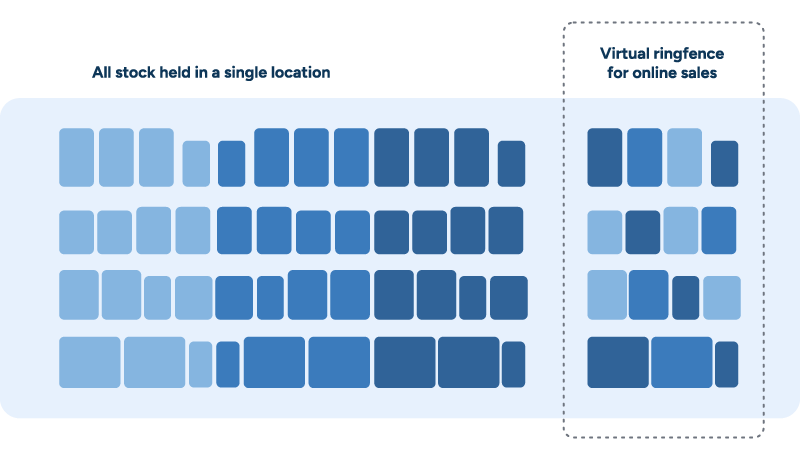
Meeting sustainability and profitability goals
Environmental and financial impact
AI-enabled optimization delivers both environmental and financial benefits. By reducing waste through better forecasting and inventory management, grocers can significantly lower their environmental impact while improving margins. This is particularly impactful in fresh categories, where waste reduction directly affects both sustainability metrics and financial performance.
Building customer trust
Sustainability initiatives resonate strongly with modern consumers, particularly younger generations. Through AI-enabled optimization, grocers can build stronger connections with their customers while improving operational efficiency by demonstrating a commitment to waste reduction and environmental responsibility.
The path forward
The transformation to AI-enabled optimization represents a fundamental shift in grocery operations. Grocers can create more resilient, efficient, and customer-centric businesses by starting with fresh categories and extending optimization across all operational areas. Success in this transformation requires a commitment to integration and a willingness to move beyond traditional systems and processes.
Spreadsheets and traditional planning solutions don’t provide the scalable cloud storage, rapid data processing and analysis, and cross-functional data sharing required for collaborative planning. Instead, these disparate systems put planners in silos with poor data and limited analytics, hampering efficient end-to-end planning.
Retailers need a unified solution that runs in the cloud but can be integrated into retailers’ other software. Configurable and flexible enough to be customized to a retailer’s unique strategies, objectives, and priorities, it can yield unrivaled accuracy and efficiency for managing all product categories in the assortment.
The future belongs to grocery organizations embracing this change through AI-enabled optimization to drive improvements across all operations. These leaders will be better positioned to drive profitable, customer-centric growth by being able to quickly react to evolving customer expectations, improve operational efficiency, and enhance sustainability in an increasingly competitive market.
